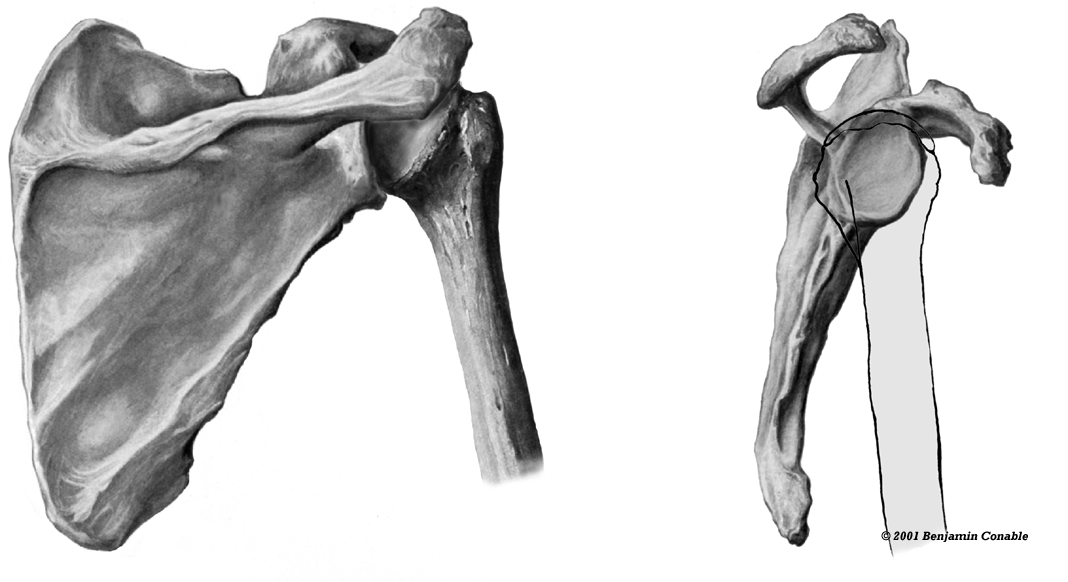Let’s take a closer look at the second joint of the arm, the glenohumeral joint. The main thing I want to point out is the size of the glenoid fossa’s articulating surface. It’s where the upper arm bone (humerus) connects to the shoulder blade, hence the name glenohumeral joint. Some people have this joint mapped incorrectly in their brain. They think the fossa wraps around the humerus more than it does. This can limit how much movement is available, forcing us to find it somewhere else.
Make a fist with one hand and wrap your other hand around it, then try to move your fist around inside the surrounding hand. Can you see how limiting it is? Now look at the images below. See how shallow the glenoid fossa is? It’s about the size of the pad on your thumb. This small articulating surface is why the shoulder has such a large range of motion.
While we’re at it, let’s look at the image on the right. You can see how much space the acromion and coracoid processes give the joint complex to move? This organization also allows the joint to have the range of motion it does and of course the collarbone supports it all.
The shoulder blade is a gorgeous bone with amazing architecture. Classified as a flat bone, its shape allows it to move smoothly over the ribs. It’s covered in muscles and connective tissues that allow us to push, pull, hang, reach, grasp, rotate and support us in an infinite number of ways.
I hope you will never think about your shoulder region the same ever again. It’s designed to move freely and comfortably when we let it. Next we will move down to the third joint of the arm, the elbow.

